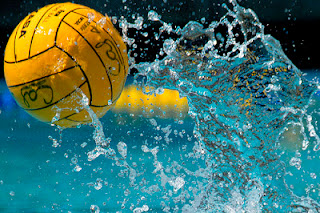So here I sit, at the McDonalds in South Boston,
Virginia, eating a sausage burrito and contemplating the immediate future. As
of July 15th, the day before my 48th birthday, I will
begin working here, as an Adult Education teacher with the Virginia Department
of Correctional Education.
A couple of points might jump to your mind if you
know me and are reading this. First, yes, I’ll be teaching in a jail. But it’s
probably a mild assignment for this business. The facility I will be working at
is a Level 1, which means that most of the residents are really on their way
out of the system. In fact, everyone here works outside of the facility. If you’re
living in Newport News, let’s just say it’s like City Farm.
Secondly, South Boston is not close to home; in
fact, it’s 182 miles away. Part of my challenge right now is finding an
affordable place to live during the workweek. Just looked at a studio apartment,
which is at the back of a private home. In terms of simplicity, this could work.
It’s all inclusive, furnished and comes with cable and Wi-Fi, which is probably
hard to find in a country town of 9,000 residents. But, I’m keeping options
open since it’s the first place I’ve looked at. The cost of living is dirt
cheap down here in NASCAR country (Martinsville is nearby). I’ve seen three
bedroom houses for rent for about $500 a month.
But this is a huge change, and I have been more than
a little wistful for the past two weeks. My comfort zone is about to explode,
being away from home 4-5 days a week. Never mind the part about mostly giving
up my “mistress,” which is what my wife calls track and field. I’m hoping to
stay involved with the cross-country and track teams at Menchville HS, but am
not sure how useful a coach can be with only one day a week (Sat.) to be
available. Thankfully, I am still writing with TrackSide magazine and have two
American record holders lined up for interviews. Of course, I can keep covering
Saturday games for the Daily Press, which automatically conflicts with what I
just said about being available for track on that day. (laugh).
Regardless, this has been a tough decision. But the
reality is that my attempts at landing a job with a local school system in
Hampton Roads have not succeeded. That’s the irony to me. After eight years of
attending graduate school, I have finished a master’s degree in education, all
of the coursework for a doctorate, earned an endorsement in school
administration, served on a statewide SOL
committee, and am getting ready to take
comps and begin my dissertation. But I can’t nail down a job. The irony is that when I go to admin interviews, it is implied that I have no school admin experience, and when I go for teaching interviews, it is implied that I'm really looking to get into administration. Amazing.
My hope is that none of this will matter and
teaching with Corrections will be a better opportunity. I already know it pays
a bit more than the school systems here, so it’s a start. There is the
challenge of working with people who genuinely need help getting their lives
back on track. I figure that most of this job will be preparing students for the
GED and helping them transition to life on the other side of jail bars. Being
that I have considered covering creativity and at-risk teenagers for a
dissertation topic, I’m probably working in the right place – with an agency
that is now linked with Juvenile Justice.
Even though I’m sad about leaving my jobs and friends,
at least during the week, I have always been one to believe that things happen
for a reason. My coaching colleague, Chris Chappell, told me to pray on this
decision when I first told him. Last Saturday, I was in Norfolk for a wedding
of my longtime friend Alicia Holloway (now Waldon). Turned out that one of the
bridesmaids lived here in South Boston, and she has offered to help me. Thanks
Tanya!! And thanks to Coach Chapp! I took his advice and resulting meeting with
Tanya as my message from above that I wouldn’t be in this (meaning South
Boston) alone, and to go ahead and accept the offer.











